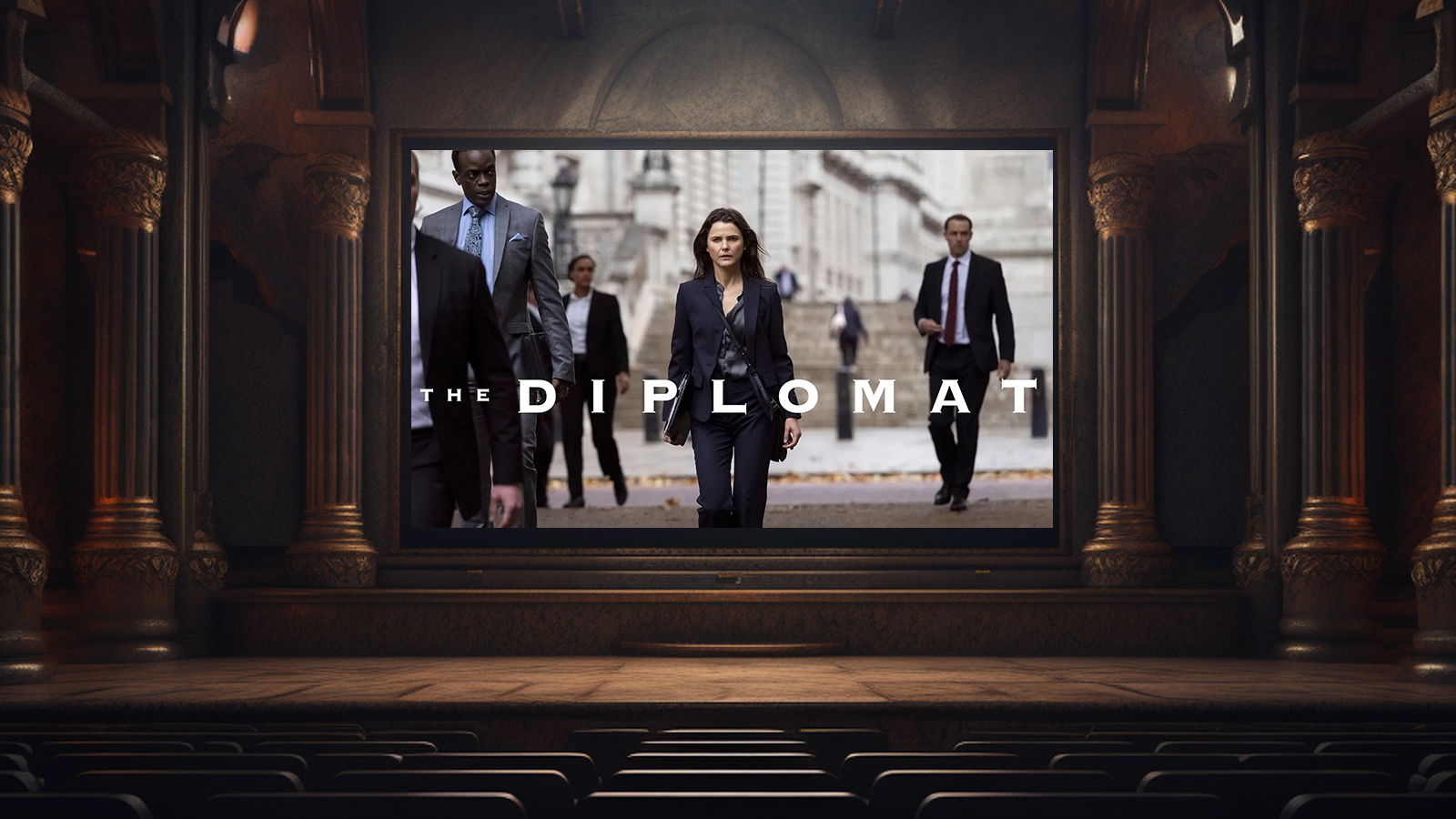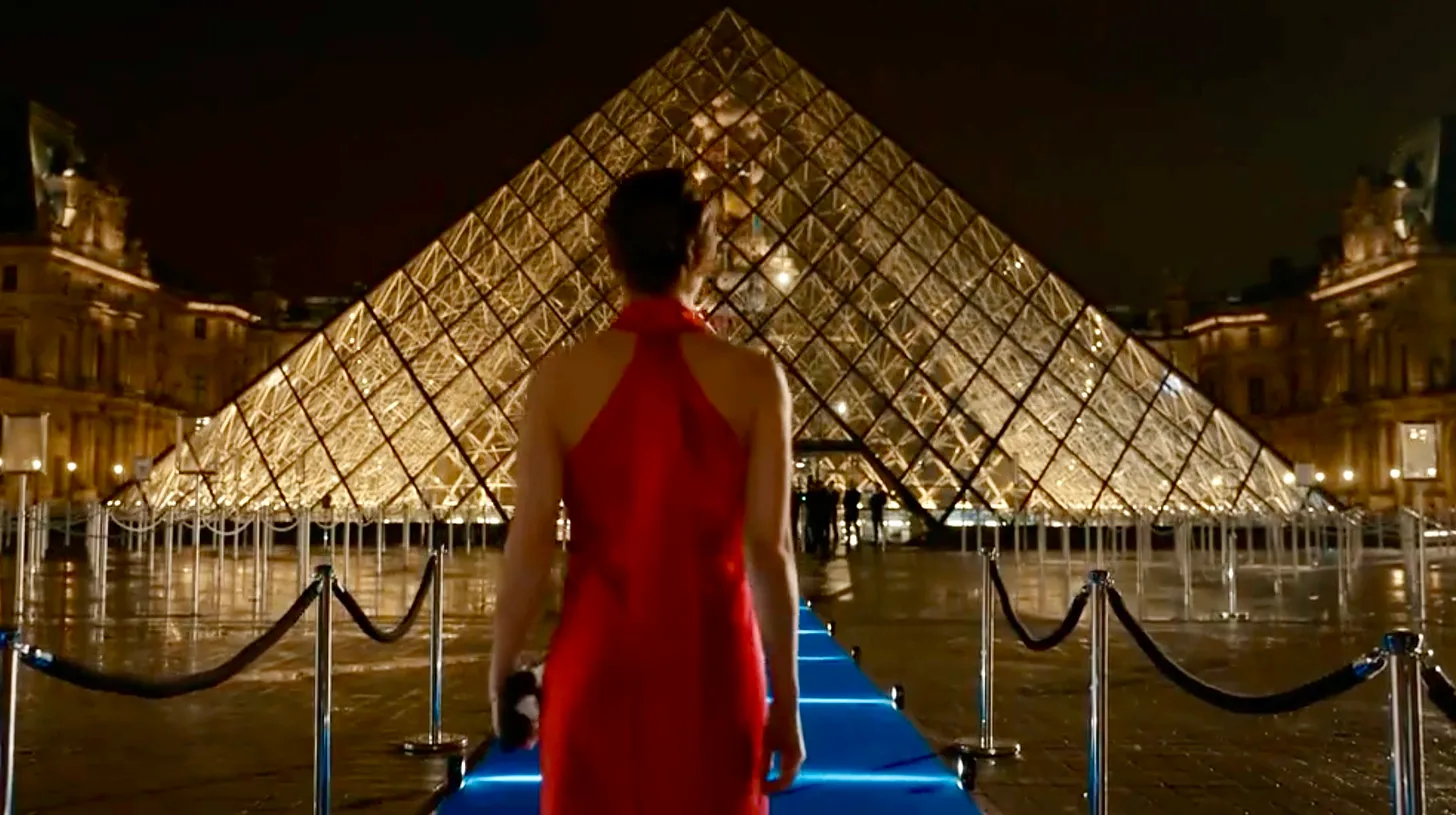
Exploring the Netflix series “The Diplomat” and how it reflects the Integral structure of consciousness
The two most asked questions we have received as part of our research into the application of Integral Theory to the cinema are: What makes a movie integral? And why are so many integral films science fiction?
What makes a movie integral?
The simplest answer is that it must reflect the Integral structure of consciousness in some way. According to Jean Gebser, the foundation of Integral consciousness is the drive to understand as many dimensions of reality as possible and integrate them into a meaningful whole, seeking a bigger picture.1 So following this definition, one way to define an Integral cinematic work would be works that attempt to integrate the multiple dimensions of its storyworld into a meaningful whole, culminating in a bigger picture.2
Why are so many integral works science fiction or fantasy?
Gebser also points out that this drive toward integration includes the seeking to integrate both gross and subtle dimensions of reality by concretizing subtle dimensions like subjective experience and time. This often leads to moving image works that make subtle dimensions like thoughts, feelings and time a concrete reality, like how The Fountain (2006) concretizes interior states and Groundhog Day (1993) concretizes time.3 We tend to call works like this science fiction or fantasy because they are playing with forms outside the constructs of our current consensual reality.
But there are some works that reflect Integral consciousness in more subtle and simple ways.
One of the simplest forms in which a work can reflect Integral consciousness is through creating a character who appears to operate at the Integral structure. Another, more subtle, form to express Integral is to follow the Gebser-inspired definition above and create a storyworld that integrates all dimensions of its cinematic reality with a driving force that reflects the Integral drive towards merging and evolving these dimensions into meaningful wholes.
Netflix’s streaming series The Diplomat (2023) does both of these beautifully, setting an Integral character inside an Integrally-driven storyworld.

The fundamental driving force of The Diplomat’s storyworld is the continual unfolding and revealing of the pieces of a hidden bigger picture of a complex political crisis. Every word, image, sound and editorial rhythm is synchronized and integrated with the drive toward the ever-evolving integration of the storyworld’s web of complex personalities, behaviors, relationships and situations.4
The main character, US Ambassador Kate Wyler (played brilliantly by Keri Russell), is gifted at seeing this unfolding. She is able to perceive the gross and subtle moving pieces in the unfolding complex reality around her and constantly integrate them into meaningful wholes. Meanwhile, the show itself takes us deep into the personal relationship fields of multiple characters, exploring the ways they are affected by and co-evolve with the unfolding plot events. Every episode ends with a synthesis of some kind that feels complete while simultaneously opening us to new directions, like the feeling of completion we get from figuring out one piece of a puzzle while knowing there are other pieces left to find.
The final moments of Season One are breathtaking in their spine-tingling reveal of a bigger picture that puts the entire journey into a deeper and more expansive perspective.5 As the end credits roll to Pink Floyd’s Great Gig in the Sky the pieces of the puzzle snap into place inside the dawning of a new and bigger puzzle we cannot wait to see unfold. Here we are given a rare gift of a satisfying ending integrated with a cliffhanger…leaving us feeling complete and wanting more all at once.
NOTES
1 Both Gebser’s and Ken Wilber’s Integral theories are attempts to understand and map the integral structure of consciousness and its perspectives on reality. Gebser developed his theories mostly through research and observation, while Wilber integrates Geber’s work along with many others. While their works are unique in many ways they agree on this foundational framework that works of art in all mediums are Integral if they reflect the Integral structure of consciousness as they define it.
2 There are many more ways to define an Integral cinematic work. Movies and television series that have any integrally-informed elements would be considered Integral, according to testing criteria developed during our research on the application of Integral Theory to cinematic media theory and practice. According to this research, a cinematic work is deemed to be integral if elements of the integral structure of consciousness are represented in the cinematic form, style, structure, content, and/or are embedded in the material as a presence or atmosphere. These representations of the elements of the integral structure can include:
- Characters that appear to be operating from an Integral structure of consciousness;
- The exploration and integration of multiple evolving dimensions and perspectives of lesser and greater depth and span;
- The concretion of abstract and interior dimensions and perspectives, such as time and interiority, in the service of evolutionary growth and development;
- An evolutionary story, event, and/or character progression that is given greater than or equal emphasis to conflict resolution, with progression developing vertically through at least three stages or levels of development;
- The evolutionary impulse as a driving force or causality pattern;
- The valuing of truth that is qualified by evolving perspectival fields;
- A trans-ideological perspective integrated into the storyworld’s thematic framework;
- And/or a Kosmo-centric circle of care and concern that suggests an awareness, integration, and embracing of all of existence.
It should also be noted that just because a cinematic work has integral elements does not automatically indicate its quality, though it will have elements of a deeper and more expansive worldview to some degree.
3 It is important to note that Pluralistic works can also concretize subtle dimensions. The difference lies in the purpose behind them. In Integral works the concretion of subtle dimensions is in the service of integrating them as part of building toward a bigger picture and vertical development (between structures of consciousness) like evolving from an egocentric to an ethnocentric circle of care and concern. Pluralistic works resist any notion of a bigger picture and will only use concretion of the subtle dimensions for horizontal development (within a single structure of consciousness) like healing of a relationship or a personal emotional wound.
4 The Diplomat’s storyworld web of complex dimensions can be correlated to Integral Theory’s Four Quadrants: Personalities (UL), behaviors (UR), relationships (LL) and situations (LR). Many Integral works integrate all four quadrants with some going farther and synchronizing these dimensions with all the other dimensions of the cinematic work including image, sound, text and time. We call this Complex Synchronization of the Senses after Sergei Eisenstein’s Synchronization of the Senses film theory.
5 Another sign of the Integral structure of consciousness operating in this cinematic work is its trans-ideological perspective. Throughout the work and culminating in the final reveal the narrative journey attempts to step outside and transcend conservative and liberal ideological polarizations as well as our ideological frames around empire and our stereotypical projections of an enemy.
About Mark Kaplan
Mark Allan Kaplan, Ph.D. is a Transdisciplinary Artist, Filmmaker, Researcher, Consultant, Educator and Media Psychologist focusing on Integral, Transpersonal, and Transformative approaches to Art, Media, and Spirituality. Mark is currently exploring various applications of Integral Theory, including the research and development of an Integral approach to cinematic media theory and practice.
About Jonathan Steigman
Jonathan Steigman is a Bay Area activist, filmmaker, magician, communication consultant and independent researcher. Jonathan has worked in film production and post-production in Los Angeles, New York and Prague, and also has extensive experience in sales, marketing, writing and editing. Jonathan is the Director of Communications at the Integral Cinema Project and he works closely with founder Mark Allan Kaplan, Ph.D. to help bring the Project’s transformational media practices to a broader audience.
